How to tie peas in the open field correctly?
Some crops, when growing, require the use of such an agricultural technique as a garter. Knowing how to tie peas, you can prevent several possible problems at once and significantly increase the yield of a legume plant. For this procedure, a variety of types of supports are used. The decision about which one to use is up to the summer resident.
What is a garter for?
The pea garter solves a number of important problems. With its help, you can achieve:
- reducing the risk of bacterial and fungal infections, rot;
- facilitating plant care;
- saving space on the site due to the compact arrangement of the bushes;
- better illumination and blowing capacity of the lashes;
- simplification of the harvesting procedure.
Pea stems vary in length from 0.5 to 2.5 m, depending on the variety. If you do not tie the plant up in the open field, the lashes will begin to lie and end up on the ground. Such bushes are often affected by a malicious pest of legumes - burhus. The bug can damage all ripening peas in a short time. As a result, the crop will be unusable for food and planting. Such fruits accumulate the toxic substance cantharidin and can cause severe poisoning.
Practice has shown that yields are higher if inclined supports are used to tie peas. In this case, the plants receive much more ultraviolet radiation than with a strictly vertical placement.
When to start tying peas?
When the sowing of peas on the bed will sprout 15–20 cm in height and the first antennae appear on the plants, the lashes should be fixed on the support. Further, the plants themselves will twine around the structure, the shoots should only be directed so that they do not intertwine with each other.
Additionally, it is not at all necessary to tie new branches, they can fix on the support on their own. Only the main stems need a garter. They are tied to the supporting structure with strips of soft tissue.
It is not worth doing this too tightly, there should be a small gap so that the plant tissues are not squeezed. If a lot of peas are planted in the garden, you can purchase special store mountings. Thin thread or wire should not be used.
Varieties that do not need support
Not all varieties need the installation of supports. Sometimes on the packaging of seeds you can find the mark "lodging resistant". The bushes of such peas grow compact, low. When planting, two peas are laid in each hole at once. In the future, the plants intertwine and hold each other.
Popular undersized varieties:
- "Vatan";
- "Shustrik";
- "Slider";
- "Chinese";
- "Grandma's Surprise";
- The Miracle of Calvedon;
- "Early mushroom".
The maximum height of these plants is 75 cm. Most of them are also resistant to diseases and shedding of seeds. For greater reliability, the stems of peas grown without support can be tied together.
Types of support structures
You should choose a support for peas taking into account the size and general style of the site, the location of the garden. A variety of structures and materials can be used as supports.
Stakes
This is the most simplified and affordable option. In addition to wooden stakes, metal rods, fittings, ordinary sticks, long branches can be used. A single support is driven into the ground at a distance of 15 cm from the plant, or the stakes are set in a row, and then the twine is pulled between them. During growth, the stem is tied to a support every 25-30 cm.The lateral branches are run along the twine. There can be several tiers of twine.
Grid
Both plastic and metal mesh will do, but it is better to give preference to the first option. The metal gets very hot in the heat and can injure the shoot tissue. You can buy a mesh at a hardware store or gardening store. The mesh material is attached to 3-4 vertical supports 2.5 m high. The supports are installed along the edges of the beds and in the middle.
Clamps or knitting wire are used as fasteners. Peas are sown on both sides of the net so that the bushes grow in a checkerboard pattern. When the stems grow a little and tendrils appear on them, the peas cling to the lower mesh cells. Further, the plants will curl on their own. The width of the structure should be 1.8–2 m. The mesh can be installed near the fence on the south side. In this case, it is fixed at an angle of 60 degrees.
The mesh structure can be made in the form of an arch, the basis for which will be bent metal-plastic pipes. This support can be considered as an element of the garden design. After the peas completely encircle the arch, it will resemble a green tunnel.
Trellis
In terms of crop rotation, peas can be grown in one place for no more than 2 years. Considering this, the use of a portable wooden trellis would be an excellent option. It is not difficult to make it yourself. You will need 4 wooden blocks, 8 slats, screws, twine.
From these materials, a semblance of two inclined staircases is constructed, connected at the top to each other. The slats are stuffed with a step of 30 cm. In the process of growth, the stems are wrapped around a trellis, if necessary, they are tied up with twine. Tapestries can also be made in the form of pyramids. Such supports are mobile, they can be easily removed for the winter or moved to any corner of the site.
Hut
Such a structure is easy to manufacture, does not take up much space, and looks decorative. On both sides of the bed, two-meter stakes are driven in, connecting them at the top of 4 pieces and tying them with a rope or twine. At the base, the stakes should form a square with sides equal to 1 m. When the peas grow, the bed will look like a row of green houses.
A wigwam is made according to the same principle, only in this case it is additionally necessary to drive a central pole 2 m high into the ground. Wooden stakes are installed around it at an inclination to the center. The whole structure is tied with a strong rope. Each peg will support two pea plants.
Fence
A hedge or fence can be used as a support for peas, if they are made of wood or netting. A solid metal sheet is not suitable for this purpose. A wooden fence keeps you warm, but does not overheat. Peas can curl on their own along the hedge made of the netting mesh, clinging to the cells with antennae. A fence made of profiled sheet is very hot in the sun, this can lead to the fact that the bushes dry out prematurely, it will not be possible to get a crop from them.
Having correctly installed the support for the peas, you can not worry about the further growth of plants and the safety of the crop. If there is absolutely no time for the manufacture and installation of supporting structures, it is better to opt for undersized varieties of culture.
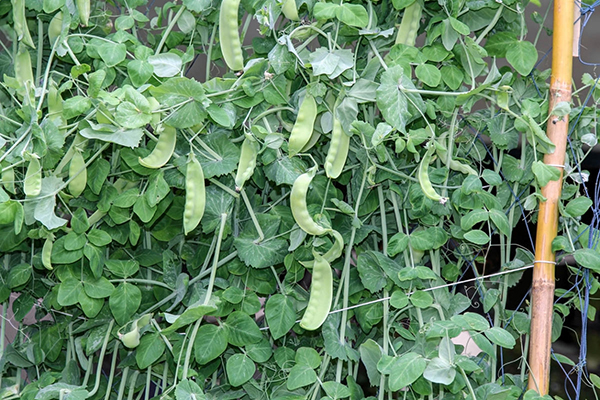
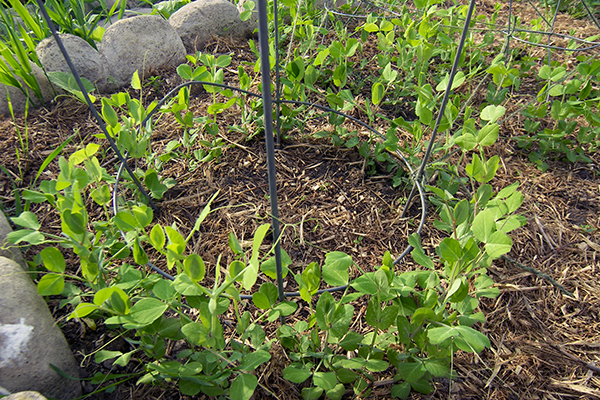
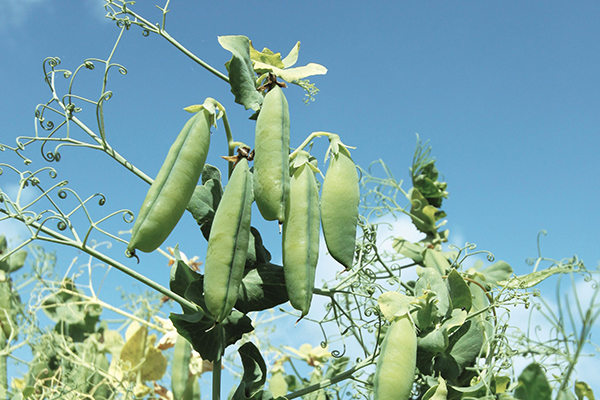
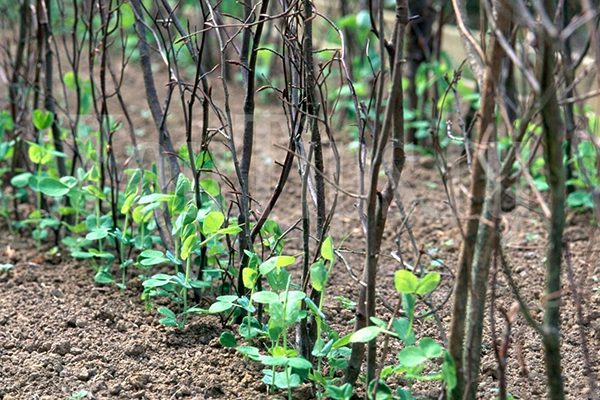
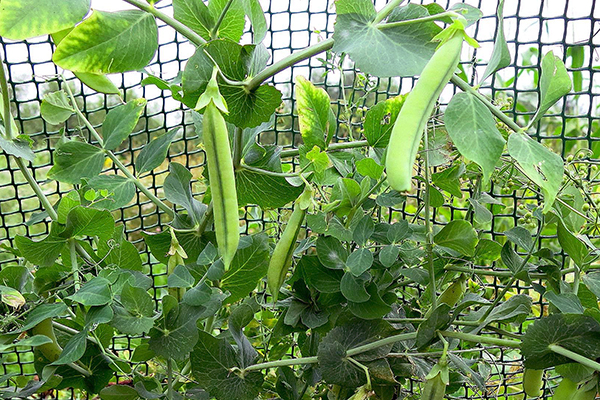
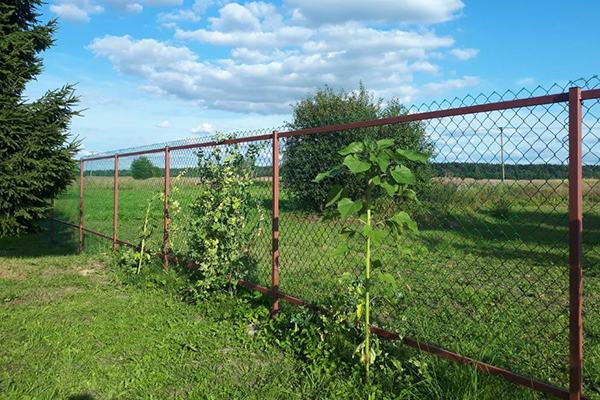
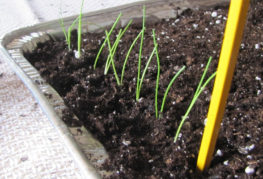
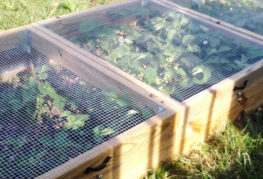
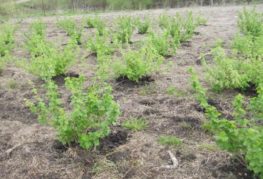
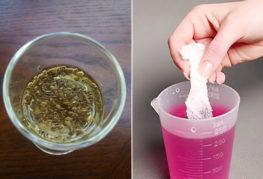
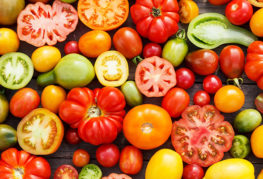
and will be published shortly.